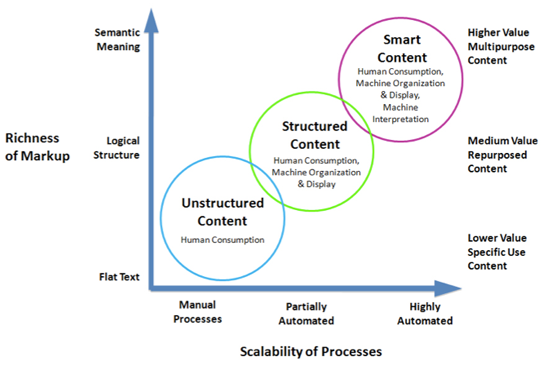The Gilbane Publishing Practice is diving deep into the transformation of publishing as more and more publishers realize that the digital domain can not be ignored. Not that there aren’t plenty of publishers—especially in STM and other professional publishing efforts—already very active in digital publishing. Still, trade publishing, for example, is seeing the very real opportunities in eBook markets, and we’re wrestling with what makes for best practices for them.
Not that anyone’s strategy makes for a “one-size-fits-all” approach. There are some trade publishers that have started in on or already have well-established single repository XML-based content management systems, the benefits of which are tremendous not just for eBooks, but for content re-use, custom publishing, localization and translation, and even to varying extents, integration with other line of publishing business systems. In trade publishing, however, there are plenty of publishers that have diverse collections of editorial and production platforms—often the result of the long history of mergers and acquisitions in this industry—and the level of integration within these editorial and production systems is ad hoc, at best, never mind effective tie-ins with marketing or sales systems, or royalties, or rights, etc. You know who you are.
So, what is the trade publisher supposed to do? While the ideal solution might be to create content chunks rich with meta-data that feed workflows across not just departments like production, but in and out of all of the other business systems as needed, there is a lot of time and money that goes into such a set up. For trade publishers with publishing systems that work—and maybe it doesn’t really matter if it’s taken a lot of gum and baling wire—what really is needed to add eBooks to the mix?
Companies like Aptara and even newer comer Tizra, along with well-established composition and conversion services, will tell you that if you can output in PDF, they can make eBook for you. And depending on the vendor, the eBook production may be very inexpensive, or have very sophisticated features, or be ready to market and sell, or some combination. SaaS is becoming more common for such processes, so investment, too, is relatively painless. Let’s think of this class of eBook production as “tigers.” This class of solutions offers impressively quick solutions and a good range of capabilities across a growing number of vendors, and represent a strong competitive argument.
XML-based repository digital asset and content management platforms, with their ability to embed rich metadata that may even enable actionable content to other publishing systems—including sales and distribution—stand as a class we can think of a “grizzly bears.” There is no doubt that this class of digital publishing solutions is a competitive strategy choice itself. One example is Wave Corporation, another is Mark Logic. Some solutions work better with publishing business-specific platforms (e.g., Klopotek, Firebrand, MEI).
Of course it may not be an either/or question. Recent news from codeMantra, about partnering with Mark Logic, points to the combining of the tiger and the grizzly. A “tizzly,” anyone?
Keep an eye open for our efforts to answer such questions, and if you are a vendor in this space, please be sure to contact Bill Trippe or Ralph Marto about participating in our multi-client reports. To read more about our Gilbane Publishing Practice consulting services, click here.

